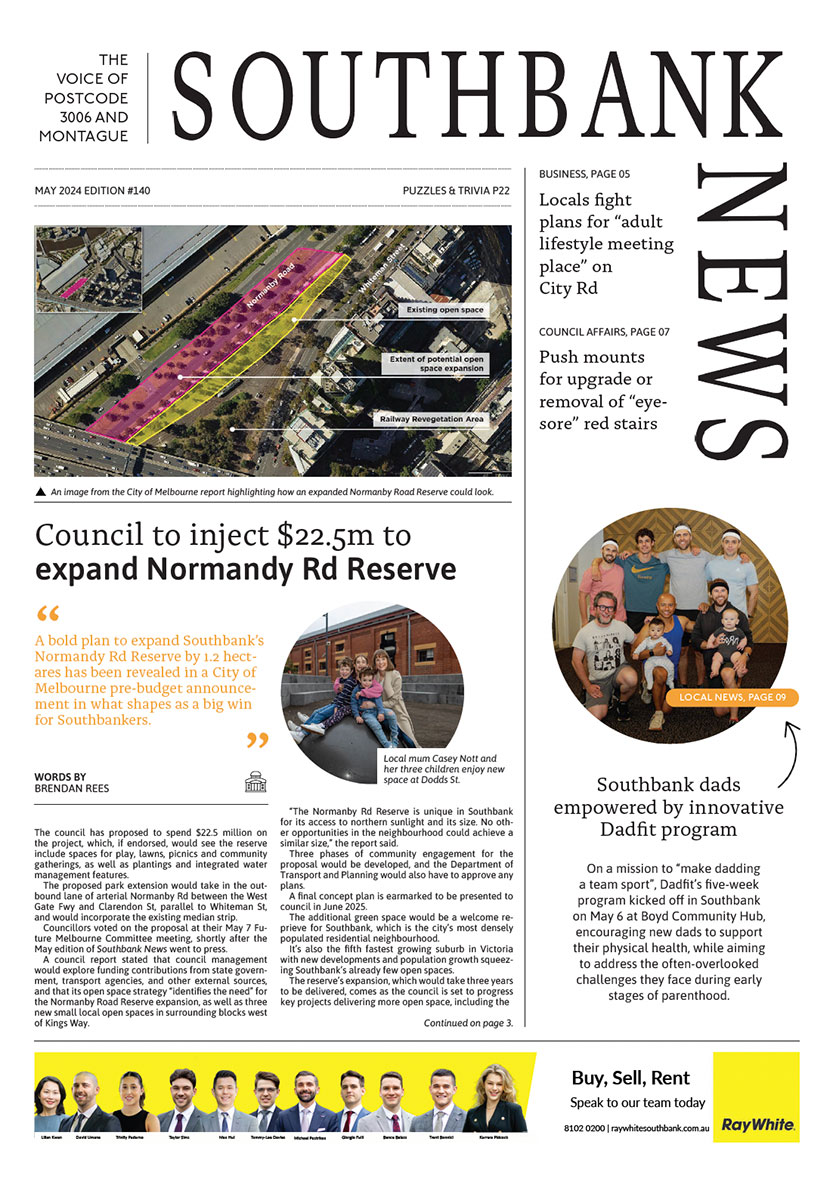
Trams in Southbank
Southbank is fortunate to be served by several tram lines, running along St Kilda Rd, Sturt St, Kings Way and Clarendon St. But it wasn’t always like that.
Melbourne had an extensive cable car network, dating from the 1890s, with lines along Clarendon St and St Kilda Rd, and a depot in City Rd (the facade remains in place).
Lines to the south were immensely popular, serving the massive crowds attending football in the winter and the beach in summer. In the 1920s and 1930s the cable car network was progressively replaced by an electrified system, requiring the removal of underground cables, replacement with new tracks and above-ground electricity poles and lines to provide power.
Opponents of the new system lamented its introduction on aesthetic grounds, but there was no doubt that passenger service was vastly improved by the electric service.
The area along Sturt St was growing in popularity and the local council began agitating in 1913 for a new line to serve residential and industrial premises.
A new line was finally commissioned in 1924, requiring a large workforce to dig up Sturt St. It was back-breaking work, largely carried out by hand as the concrete and woodblock foundations were laid for the trams, which linked to St Kilda Rd at one end and ran through to South Melbourne beach.
It was a red-letter day for the area when the line was opened in October 1925, with celebrations (and speeches) by the Minister for Public Works, mayor, councillors and Tramways Board officials.
When the lady mayoress cut a ribbon, the new line was open for business.
But the trams finished operations in the late evening and needed an overnight depot.
The site chosen was a large (2.8 ha or 6.9 acres) site at the corner of Dorcas St and Hanna St, later Kings Way.
From 1925 it was a sprawling, bustling and busy depot, where local kids could climb the fence and explore.
In the turbulent world of union/management disputes that characterised the tramways service for many years, the South depot was a hotbed and often served as the start point for industrial action by the militant Tramways Employees’ Association.
Sudden walk-offs, strikes (sometimes authorised by the union, sometimes not), work to rules campaigns, refusal of rosters, and so-on were frequent. In the early 1930s, the Tramways Board even resorted to placing plainclothes police amongst the depot workers to gain information about proposed actions.
It closed in 1997 and was demolished in June 1998 and redeveloped as a gleaming corporate headquarters.
Robin Grow President - Australian Art Deco and Modernism Society

La Camera celebrates 25 years at Southgate

New residential tower planned for heart of Southbank





 Download the Latest Edition
Download the Latest Edition